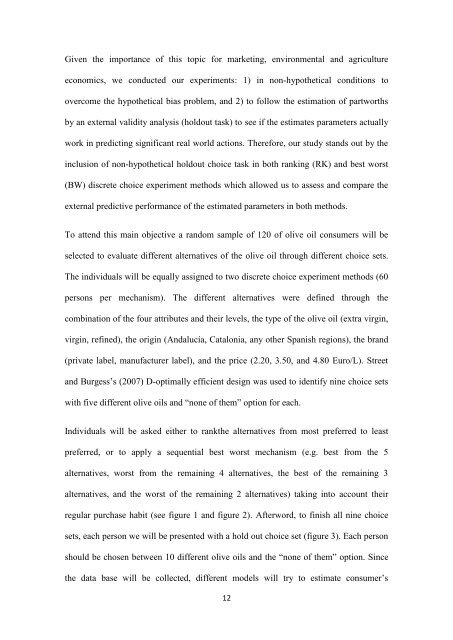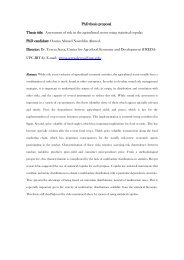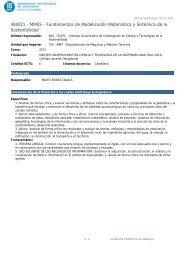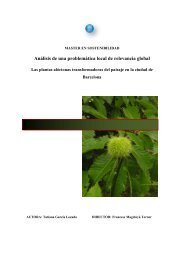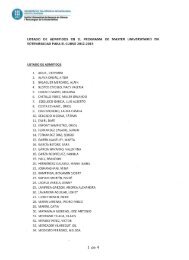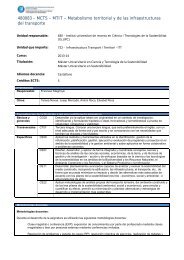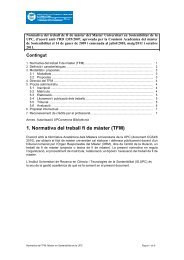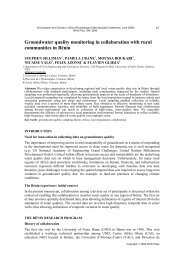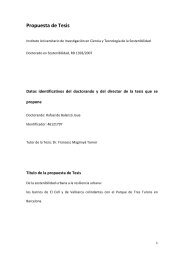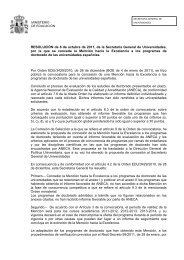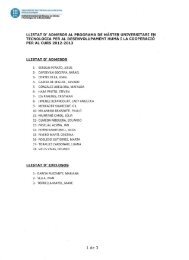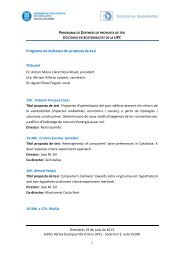âConsumer's behavior towards extra virgin olive oil: hypothetical and ...
âConsumer's behavior towards extra virgin olive oil: hypothetical and ...
âConsumer's behavior towards extra virgin olive oil: hypothetical and ...
You also want an ePaper? Increase the reach of your titles
YUMPU automatically turns print PDFs into web optimized ePapers that Google loves.
Given the importance of this topic for marketing, environmental <strong>and</strong> agricultureeconomics, we conducted our experiments: 1) in non-<strong>hypothetical</strong> conditions toovercome the <strong>hypothetical</strong> bias problem, <strong>and</strong> 2) to follow the estimation of partworthsby an external validity analysis (holdout task) to see if the estimates parameters actuallywork in predicting significant real world actions. Therefore, our study st<strong>and</strong>s out by theinclusion of non-<strong>hypothetical</strong> holdout choice task in both ranking (RK) <strong>and</strong> best worst(BW) discrete choice experiment methods which allowed us to assess <strong>and</strong> compare theexternal predictive performance of the estimated parameters in both methods.To attend this main objective a r<strong>and</strong>om sample of 120 of <strong>olive</strong> <strong>oil</strong> consumers will beselected to evaluate different alternatives of the <strong>olive</strong> <strong>oil</strong> through different choice sets.The individuals will be equally assigned to two discrete choice experiment methods (60persons per mechanism). The different alternatives were defined through thecombination of the four attributes <strong>and</strong> their levels, the type of the <strong>olive</strong> <strong>oil</strong> (<strong>extra</strong> <strong>virgin</strong>,<strong>virgin</strong>, refined), the origin (Andalucía, Catalonia, any other Spanish regions), the br<strong>and</strong>(private label, manufacturer label), <strong>and</strong> the price (2.20, 3.50, <strong>and</strong> 4.80 Euro/L). Street<strong>and</strong> Burgess’s (2007) D-optimally efficient design was used to identify nine choice setswith five different <strong>olive</strong> <strong>oil</strong>s <strong>and</strong> “none of them” option for each.Individuals will be asked either to rankthe alternatives from most preferred to leastpreferred, or to apply a sequential best worst mechanism (e.g. best from the 5alternatives, worst from the remaining 4 alternatives, the best of the remaining 3alternatives, <strong>and</strong> the worst of the remaining 2 alternatives) taking into account theirregular purchase habit (see figure 1 <strong>and</strong> figure 2). Afterword, to finish all nine choicesets, each person we will be presented with a hold out choice set (figure 3). Each personshould be chosen between 10 different <strong>olive</strong> <strong>oil</strong>s <strong>and</strong> the “none of them” option. Sincethe data base will be collected, different models will try to estimate consumer’s12


